The Big Read: Can a higher carbon tax lead Singapore to the promised green land?
From oil majors to gencos and customers, everyone will be impacted by the rise in carbon taxes, but Singapore has to be prepared to do what it takes to reduce emissions and invest heavily in decarbonisation.
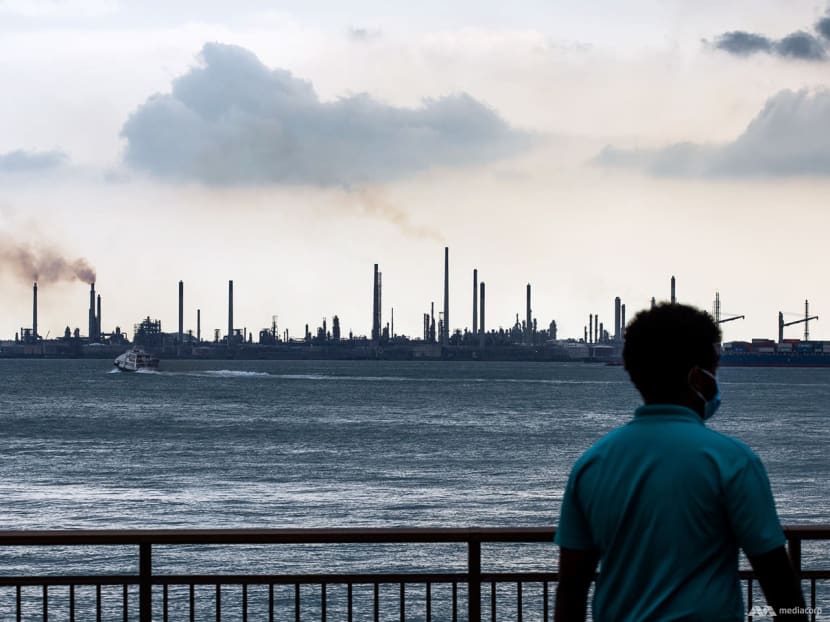
In his Budget speech, Finance Minister Lawrence Wong said that the increase in carbon tax will help Singapore to “move decisively” in achieving its new ambition of achieving net zero emissions by around the mid-century. (Photo: TODAY/Ili Nadhirah Mansor)
SINGAPORE: Back in 2019, when Singaore became the first Southeast Asian country to implement a carbon tax — touted as a cost-effective way to combat global warming — many viewed the rate of S$5 per tonne of carbon emissions as too low.
The rate, which currently covers facilities producing about 80 per cent of Singapore’s total carbon emissions, puts the island at the bottom of the carbon tax ladder, far below other countries such as Sweden (S$186) and Switzerland (S$137.55). The low rate is meant to give businesses time to adjust to a carbon tax, the Singapore authorities had said.
Still, the rate is “alarmingly insufficient and meagre” when compared with global recommendations of S$100 by 2030 for advanced economies, said Mr Shawn Ang, a 23-year-old undergraduate and spokesperson for Students for a Fossil Free Future (S4F), a coalition championing the elimination of fossil fuels.
“Such a low rate indicates policy inertia and has been extremely inconsistent with Singapore’s ambitions to reach net zero, which was previously targeted for ‘as soon as viable’,” added the third-year environmental science and political science undergraduate from Nanyang Technological University (NTU).
However, the impending hike in carbon tax, which will be raised to a more “respectable level” of S$25 per tonne in 2024 and even higher in subsequent years, will give Singapore a seat alongside serious carbon tax users, said Dr Vinod Thomas, a visiting professor at National University of Singapore’s (NUS) Lee Kuan Yew School of Public Policy.
Dr Thomas is also an economist and former World Bank vice-president, who oversaw the organisation's flagship reports on climate and the environment.
The tax will be further increased progressively to S$45 per tonne in 2026, with a view to reach S$50 to S$80 per tonne by 2030.
The higher rates — which were announced during the Budget statement in Parliament on Feb 18 — were welcomed by S4F and other environmentalists, such as SG Climate Rally, a youth-led movement for climate justice.
However, they noted that even with the progressive hikes, the carbon tax rate will still remain below the global benchmark recommended for advanced economies.
Related:
What will it mean for businesses and consumers as a hike in carbon tax trickles down:
“This announcement has given us renewed hope and faith that collectively, Singapore is prepared to do what it takes, and what is right to mitigate climate change even if it comes at short-term costs,” said Mr Ang.
In his Budget speech, Finance Minister Lawrence Wong said that the increase will help Singapore to “move decisively” in achieving its new ambition of achieving net zero emissions by around the mid-century.
Previously, Singapore had aimed to halve its emissions by 2050, before reducing to net zero in the second half of the century.
Ms Melissa Low, a research fellow at NUS’ Energy Studies Institute, pointed to public sentiment as one possible reason why the Government raised the carbon tax beyond its initial indication of between S$10 and S$15 per tonne by 2030.
“I think the Government is hearing a lot from stakeholders, including young people and Members of Parliament (MP), on increasing the tax ... Maybe the many engagements on the Singapore Green Plan indicated to the Government that we need higher carbon tax, if not things won’t move,” she said.
The Green Plan is a “whole-of-nation movement” charting Singapore’s green targets until 2030.
Ms Grace Fu, the Minister for Sustainability and the Environment, said that the hike is meant to send a signal to companies that carbon emissions have an explicit cost on the environment.
They will now find it worthwhile to adopt sustainable measures to reduce their carbon tax, she said during a forum at the Singapore University of Social Sciences (SUSS) on Feb 19.
While many view the impending hike in carbon tax as unavoidable, given the intensified concerns over climate change in recent years, some observers pointed out that consumers and businesses may feel the pinch in the form of higher prices and costs.
With carbon tax here to stay and rise further, we look at how effective it is, who bears the brunt of the tax, and what else needs to be done to move the needle on carbon emissions.
HOW CARBON TAX BECAME A GLOBAL MOVEMENT
About three decades after Finland became the first country to introduce the carbon tax in 1990, about 30 other countries had implemented a carbon tax system nationwide as of last year, according to data from the World Bank.
The taxes levied by the different countries, in total, covered 2.93 gigatonnes of carbon dioxide equivalent and represented 5.4 per cent of global greenhouse gas emissions for last year.
The carbon tax is one of two popular carbon pricing mechanisms adopted globally.
The other is the cap-and-trade system which places a limit on the total level of greenhouse gas emissions that emitters can release. Those with lower emissions can sell their extra allowances, or carbon credits, to bigger emitters.
According to the World Bank’s online carbon pricing dashboard, 45 national jurisdictions and 34 subnational jurisdictions are using carbon pricing mechanisms, covering about 20 per cent of global greenhouse gas emissions for last year.
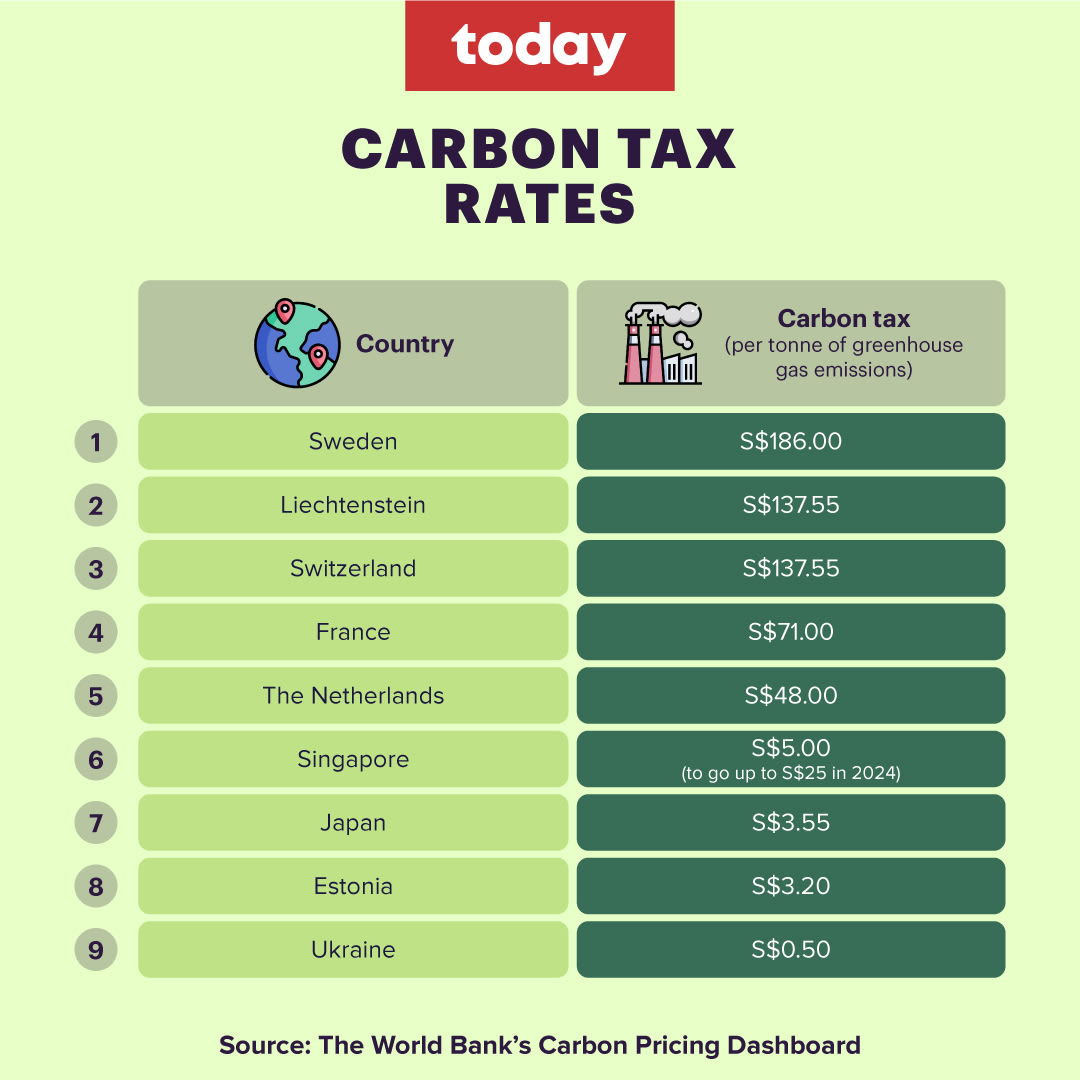
Internationally, there has been a greater push for countries to adopt carbon pricing mechanisms as a proxy to reduce carbon emissions, given that they are the most direct way to incentivise emitters to reduce their emissions.
Last July, the Group of 20 (G20) countries recognised carbon pricing, which includes carbon taxes, as a potential tool to address climate change for the first time, including its mention in an official communique following a meeting by G20 finance ministers in Italy.
The International Monetary Fund (IMF) also proposed last year that countries implement a tiered system of carbon pricing based on their income levels by 2030.
Advanced economies should charge US$75 (S$100) per tonne of emissions, high-income emerging-market economies should charge US$50 per tonne of emissions, while lower-income emerging markets should charge US$25 by the coming decade.
These rates will bring emissions in line with keeping global warming below 2 degrees Celsius as targeted by the 2015 Paris Agreement on climate change, said the IMF.
SINGAPORE'S CARBON TAX JOURNEY
In Singapore, the Government first declared its intention to implement some form of carbon pricing in 2010, provided other countries also pledged to curb their carbon emissions.
In 2017 — a year after Singapore ratified the Paris Agreement and formalised its pledge to reduce emissions intensity by 36 per cent from 2005 levels by 2030 — former Finance Minister Heng Swee Keat revealed firmer plans for a carbon tax.
The tax, said Mr Heng, would be “the most economically efficient and fair way to reduce greenhouse gas emissions” so that emitters take the necessary action.
The carbon tax was implemented in 2019 and applies to about 50 facilities producing more than 25,000 tonnes of greenhouse gas emissions or more in a year. These facilities are from the manufacturing, power, waste, and water sectors.
While the current rate is to help companies transit to the tax regime, the National Climate Change Secretariat (NCCS), which oversees climate change strategies here, said that the revised prices are “critical in enabling the pace of transformation needed to achieve (Singapore’s) raised climate ambition”.
The tax revenue will also support decarbonisation efforts and the transition to a green economy.
The evolving carbon tax rates in Singapore reflect its improved targets to reduce emissions over the years.
In 2009, Singapore had pledged to reduce its greenhouse gas emissions by 16 per cent below business-as-usual levels in 2020.
In line with its Paris Agreement obligations, Singapore further committed to reduce its emission intensity, which is the amount of greenhouse gas emitted per dollar of Gross Domestic Product, by 36 per cent from 2005 levels by 2030.
In a significant change two years ago, Singapore set a target based on absolute emissions, rather than emission intensity. The former places a cap on the island’s emissions, while the latter allows for absolute carbon emissions to grow in tandem with economic growth.
The target was to peak emission at 65 metric tons of carbon dioxide equivalents (MtCO2e) around 2030, and then to halve emissions to 33 MtCO2e by 2050, with a view to achieving net zero emissions “as soon as viable” in the second half of the century.
Net zero emissions mean that the same amount of carbon emissions produced are also removed from the atmosphere.
Last month saw the timeline to achieve net zero emissions brought forward to by or around mid-century.
THE CASE FOR CARBON TAX
As nations scramble to fight climate change, carbon tax is expected to incentivise companies to reduce their use of fossil fuels — which release large amounts of carbon dioxide when burned — to avoid paying taxes and turn to renewable energy, said experts.
It is the “most direct and efficient way to price air”, said Dr Thomas. It also provides a substantial source of revenue to be invested in renewable energy, he added.
Nevertheless, the effectiveness of carbon tax is contingent on its rate, which must be high enough to incentivise companies; the time period given for industries to adapt to the tax; and the availability of green technology for industries to tap, said experts.
Dr Thomas said that the experience of other countries has shown that a strong reduction in emissions typically kicks in when the rate goes beyond S$25.
He suggested that Singapore bring forward the revised rates to the mid-2020s rather than 2030, given the “very immediate” cost of climate change such as sea level rise and weather changes.
Professor Euston Quah, who specialises in environmental economics at NTU, however, argued for adjustments to the carbon tax to be spread out over a longer time period, beyond 2030.
He pointed to the constraints facing Singapore in switching to renewable energy. The use of solar energy, for instance, is hampered by limited space, while tapping energy sources through an international grid or pipeline would present energy security issues.
A longer runway with fewer drastic increases in carbon tax prices would give companies time to adjust to the changes, said Prof Quah, who is the Albert Winsemius Chair Professor of Economics.
WHAT COMPANIES ARE DOING
Big emitters which are subject to the carbon tax said that they have already implemented various decarbonisation measures to reduce their emissions over the last decade.
Ms Geraldine Chin, the chairman and managing director of petroleum company ExxonMobil Asia Pacific, said that the firm has introduced a series of initiatives since 2002, which have led to energy efficiency gains of more than 25 per cent and reduced the carbon emissions of its Singapore facility.
These initiatives include the operation of three cogeneration facilities that produce both electricity and steam concurrently. Cogeneration recovers heat energy after electricity is generated to produce steam.
The steam is then used for ExxonMobil’s plant operations in Singapore. This process requires less fuel and emits less carbon than if the steam and electricity were produced separately.
Ms Chin said that its Singapore team is also working to develop a detailed emissions-reduction road map to bring the company’s ambition to achieve net-zero greenhouse gas emissions from its operated assets by 2050 to fruition.
She added that ExxonMobil has long supported an explicit price on carbon and added that a stronger carbon price signal from the Government encourages investments in greenhouse gas reduction.
However, given Singapore’s open economy, it is also important that the carbon tax framework safeguards the competitiveness of trade-exposed industries. They are competing with other industrial facilities globally that have either no, or a lower price on carbon domestically or on their exports, said Ms Chin.
German chemical company Evonik, whose headquarters for its Southeast Asia, Australia and New Zealand operations is in Singapore, said that it also takes climate and environmental protection “extremely seriously”.
Among its efforts to reduce its emissions is a made-to-order power supply solution on its methionine plant on Jurong Island, which gives its complex control over energy management and maximises power efficiency to reduce carbon emissions.
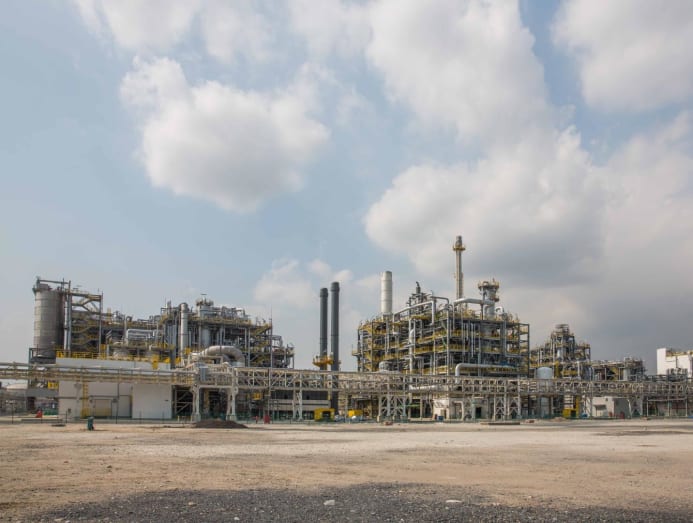
Evonik said that it is not worried about the potential impact of carbon tax on its operations as it continuously looks for ways to make its processes more sustainable.
Small and medium-sized (SME) companies which are not subject to carbon tax have also taken pains to reduce their energy use, partly spurred by rising business costs, and in the process do their part to reduce their carbon footprint.
Precision engineering company Certact Engineering has been looking for ways to reduce its energy consumption and lower its operational costs ever since its sales took a hit during heightened trade tensions between the United States and China four years ago.
The company’s finance manager, Mr Daryl Chia, said that the company has installed industrial fans in its production site at Kian Teck Drive in Jurong, so that it can switch off air-conditioners during cooler periods of the day and reduce electricity consumption.
The company has also installed 258 solar panels on the rooftop of its production facility. The energy generated from the panels provides about 20 per cent of its monthly electricity usage of 85,480kWH per month, said Mr Chia.
Based on the current rate of 18 cents per kWH, Mr Chia said that the solar panels help the company save S$3,077 monthly.
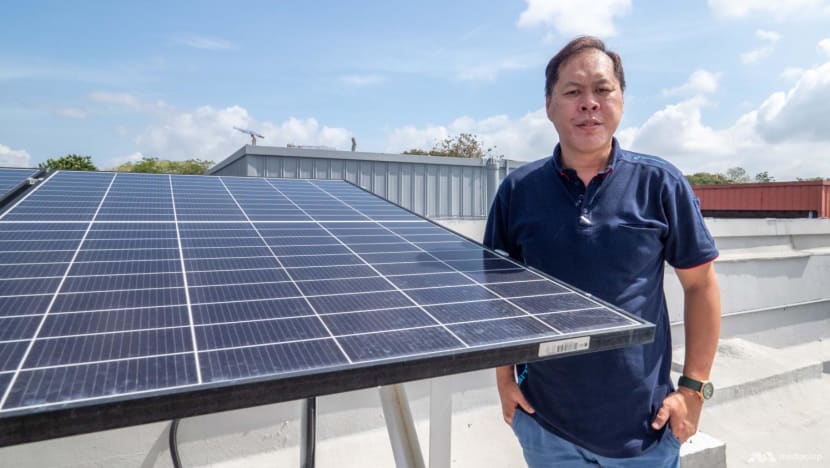
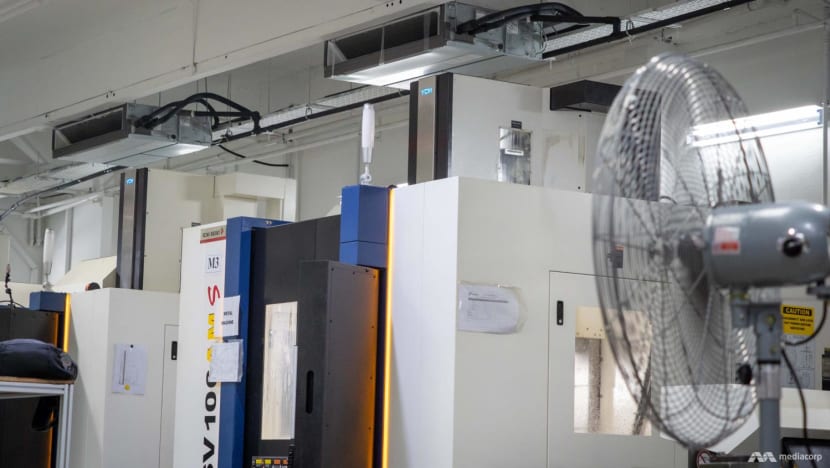
The company does not track its carbon emissions as it does not know how to do so. Nevertheless, it is “constantly on the lookout” for hardware or methods to save electricity and energy, he said.
Another SME, Kawarin, was also partly spurred by a desire to cut costs when adopting sustainable efforts in its operations.
Among other things, the steel servicing company reuses the wooden timbre pallets that come with its steel imports to package its own products. A team of workers will remove the nails from the pallets and customise them to suit the different sizes of Kawarin’s own products. It also uses the wrapping paper from its imports for its own products.
Kawarin’s managing director Ken Lin said the company started such cost-saving efforts about a decade ago when energy costs began to rise.
“The (steel servicing) market opened up and became more competitive 10 years ago. So we needed to think about how to cut costs from various angles and also, in a way, save energy.”
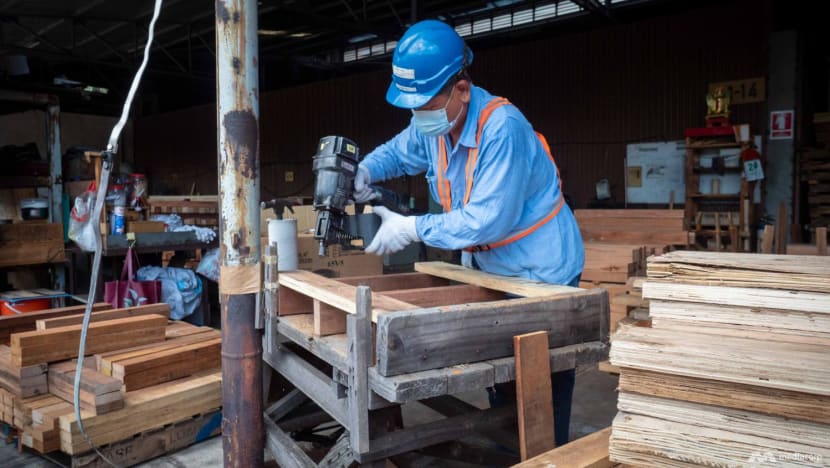

Eng Hup Shipping, which provides vessel chartering and shipyard services for business across Asia, said that it started its decarbonisation journey three years ago after it observed an increasing demand for low-emission vessels by its clients.
The company participated in the LowCarbonSG Programme offered by Global Compact Network Singapore (GCNS) last year, which provides tools for companies to monitor and reduce their emissions where possible.
GCNS is the Singapore chapter of a United Nations initiative which encourages businesses worldwide to adopt sustainable practices.
The shipping company’s head of corporate services, Ms Lyn Phun Yi Ying, said that it has consolidated multiple individual trips into an optimised route to lower its fuel usage and carbon emissions.
It also moderates the speed of its vessels to reduce energy usage.
“Different engine models have their respective performance curves. Hence, in order to maximise the efficiency of the engines to reduce fuel consumption, we ensure that the captain of our vessel, as much as possible, operates their assigned vessel closest to its most efficient speed,” said Ms Phun.
These efforts have allowed it to cut its carbon footprint by up to 10 per cent.
She added that while the company is not affected by the carbon tax, it serves larger corporations which may have to pay the tax.
Thus, Eng Hup Shipping is trying to reduce its emissions so that it can help decrease the supply chain carbon footprint of its clients. This will be beneficial to the latter if indirect emissions, which occur in a company’s value chain, are subject to carbon tax in future, said Ms Phun.
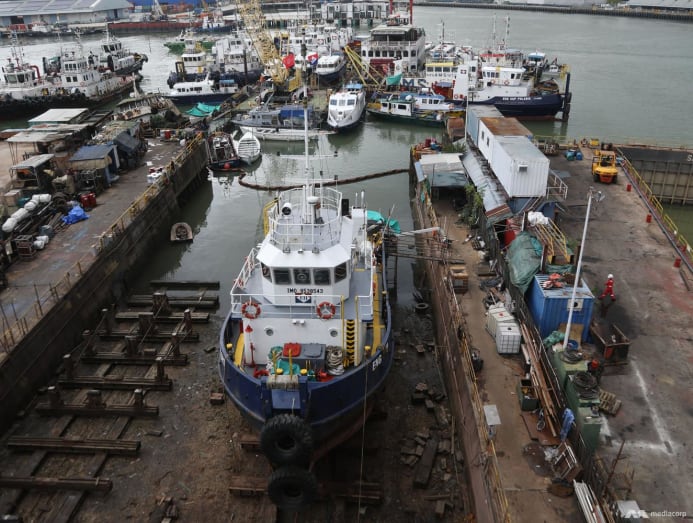
WILL CONSUMERS BEAR THE COST?
But even as smaller companies are going green to reduce their operational expenses, the carbon tax is expected to raise such costs for big emitters.
If big emitters generate their own energy with fossil fuels, higher operational costs can come in the form of higher tax if they do not switch to alternative sources of energy which are untaxed.
Carbon intensive sectors, such as power generation companies (gencos), will also feel the squeeze from a higher carbon tax. More than 95 per cent of Singapore’s electricity is now generated by natural gas, a form of fossil fuel.
Facilities in other sectors will indirectly face a carbon price on the electricity they consume as well, as gencos are expected to pass on some degree of their own tax burden through increased electricity tariffs.
Finance Minister Wong had said that the S$25 carbon tax per tonne of emissions will lead to an increase of about S$4 per month in utility bills for an average household living in a four-room Housing and Development Board flat, though additional rebates in the form of GST Vouchers will be provided to cushion the impact.
Prof Quah said that if companies are unable to adapt quickly to the carbon tax by adopting decarbonisation technology, the tax hikes may end up driving inflation.
For example, gencos facing higher production costs may pass them on to retailers, who may eventually pass them on to households. Other expenses such as retail, food and transport may also go up due to higher electricity bills.
The extent of cost increases will depend on the tax incidence, or how the tax is shared among different parties such as the gencos, retailers and consumers, said Prof Quah.
“If the gencos have to pay a higher carbon tax, it means they will have a higher cost of production and operation," he added. "The question is whether the gencos can pass this (higher cost) to the (electricity) retailer who buys from (them). That, in turn, depends on how much these (electricity) retailers can pass on to the retail firms in the market to the households.”
Prof Quah said that household electricity bills, for example, will go up if residents do not cut back on their utility usage. While households are largely dependent on electricity and will have to pay the increase in prices, the estimated increase of S$4 a month is “very low”, he added.
Prof Quah felt that consumers will be able to adjust their behaviour and cut back on expenditure for other goods and services such as recreation and food.
This means that households will be able to cope with the higher carbon tax “quite comfortably” as they adapt and reduce their energy use and consumption. However, businesses which are unable to pass the cost on to customers will be hurt, said Prof Quah.
Nevertheless, Ms Low from the NUS Energy Studies Institute expressed concern whether households will be able to cope with the trickle-down effect of the carbon tax, alongside other cost increases such as the higher Goods and Services Tax that will kick in next year.
She said it is yet unclear if consumers will be able to adjust their behaviour and reduce their energy usage. She noted that household appliances which consume the most energy, such as washing machines or refrigerators, are only replaced with more efficient models when existing ones are worn out.
To reduce their energy use, consumers may simply transfer their consumption of electricity outside of the household. For example, to reduce their utility bill, they may choose to charge their mobile phones at their offices instead of homes, defeating the underlying intent of the carbon tax which is to encourage a reduction in energy use.
Consumers we spoke to said that they do not intend to reduce their electricity usage, as the expected increase for utilities was not significant.
“The additional S$4 to the overall cost of the bill is not much and it doesn't really bother me. I may use less electricity but I won’t go out of my way to reduce my consumption,” said Mr Sivakumar Balamurugan, a 33-year-old marketing manager.
In response to queries, genco Senoko Energy said that with the impending increase in carbon tax, it will continue to explore efficiency upgrades and improve the efficiency of its existing power plants that can further reduce carbon emissions.
Senoko Energy chief executive officer Graeme York said that for his company, "replacing power generation fleet even with the most modern gas turbines would only reduce emissions by 10 per cent”.
Deep emissions reductions can only come from tapping other energy supplies such as solar, regional power grids and low-carbon alternatives, he said.
On the potential impact on energy costs, he added that Senoko Energy is committed to offering competitive prices and to meet the energy needs of businesses and consumers through sustainable and innovative solutions.

Utilities company SP Group, in response to queries, said that it does not generate electricity nor have a retail licence to offer different price plans to customers.
Its spokesperson said that the company offers customers the regulated tariff rate by the Energy Market Authority (EMA) to reflect the actual cost of electricity. A large percentage of the cost of tariff is fuel cost, which is paid to the gencos and reflects the cost of fuel and power generation.
Nevertheless, SP Group said it offers a range of sustainable energy solutions to its customers to lower their energy consumption and carbon emissions.
For example, it offers a carbon footprint calculator on its SP Utilities App to allow customers to track carbon emissions from daily activities.
It is also planning to retrofit several buildings in Tampines central with a distributed district cooling system, which will generate and distribute chilled water to these buildings, to reduce electricity consumption.
In a webpage on frequently asked questions about the carbon tax posted since 2019, NCCS addressed the concern of how the Government would ensure that consumers are not over-charged by electricity retailers passing on more than 100 per cent of the carbon tax to them.
NCCS said that the competitive electricity retail market discourages retailers from raising their electricity rates excessively.
Nevertheless, the EMA will continue to ensure fair and efficient conduct of market players, said NCCS.
In its response to questions on additional safeguards in place to protect consumers, NCCS said that the carbon tax revenue will be used by the Government to cushion the impact of the increase in utility costs for households, such as through additional U-Save rebates for lower and middle-income households.
Government's efforts aside, experts and environmentalists interviewed had other suggestions on how to mitigate the impact of businesses passing down the cost of carbon tax to consumers.
SG Climate Rally said that price controls could be imposed on essential items such as household goods, medication and utilities, while Dr Thomas suggested that the Government invest heavily in renewables so that companies can switch to non-taxable forms of energy.
GOING BEYOND CARBON TAX
Although carbon tax is viewed as key to fighting climate change, it can only be effective if accompanied by other policies that support decarbonisation efforts, experts said. Other stakeholders, such as businesses and individuals, also need to take action to be greener.
Beyond carbon tax, Dr Thomas said that installing more charging points will help increase the adoption of Electric Vehicles, regarded as transportation’s answer to reducing climate change emissions; while the plan for Singapore to quadruple its solar deployment to at least 2 gigawatt-peak (GWp) by 2030 can be scaled up.
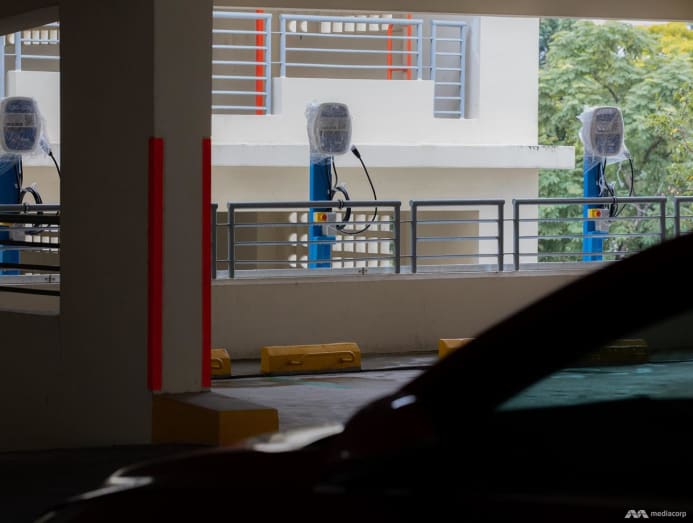
SG Climate Rally suggested that large emitters be required to produce a certain percentage of renewable energy in their operations.
Ms Woo Qiyun, 25, who runs the Instagram account The Weird and Wild to educate readers on environmental policy, suggested more robust sustainability reporting so that the environmental impact of corporations will be more visible.
“Public accountability can be one lever to push for emissions reductions. Transparency, traceability and clarity of their disclosed emissions, carbon tax liabilities and the use of offsets would be key markers for observers to assess corporations' progress in emissions reduction,” she said.
Mr Ang of S4F said that while the latest announcements on the carbon tax gives the student coalition "renewed hope" that Singapore is "prepared to do what it takes" for climate change, Singapore can push further.
Said Mr Ang: "We believe that Singapore, being well-resourced...and being a leader in many industries, technologies and intergovernmental spaces, can and must do more than it currently is, to do our fair share for the world and for our collective futures."
This story was originally published in TODAY.










